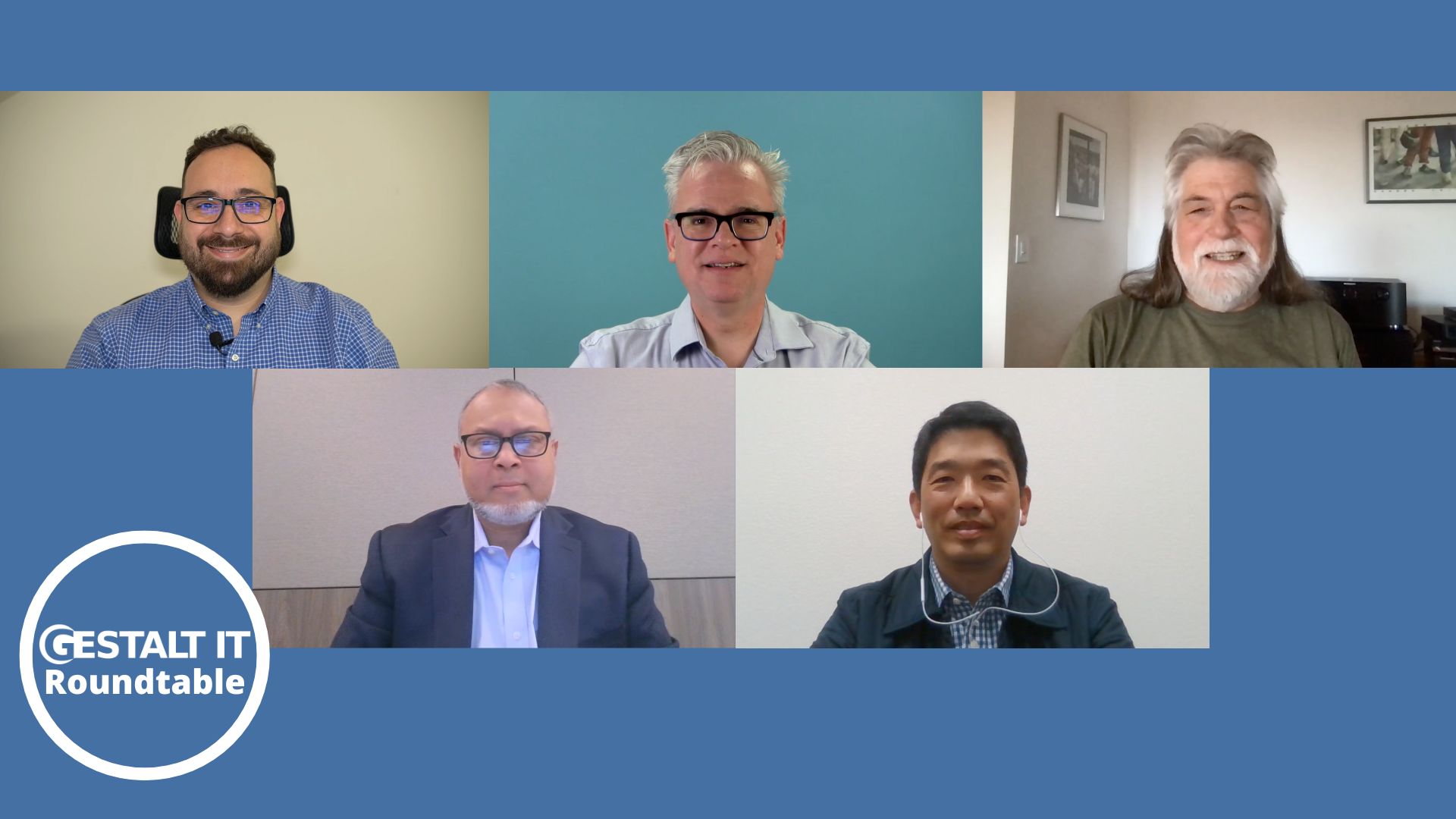
As enterprise and cloud data growth continues, opportunities are appearing to leverage next-generation SSDs in new server form factors to improve capability and sustainability. This Gestalt IT Tech Talks Roundtable features Tahmid Rahman of Solidigm, Patrick Chiu of Supermicro, discussing next-generation SSD with Max Mortillaro, Andy Banta, and Stephen Foskett of Gestalt IT. Today’s SSDs have a new form factor called EDSFF or E3 for increased density as well as next-generation NVMe protocol support for high performance, low latency, and new capabilities. Solidigm is developing specialized SSDs to meet real-world workload demands from AI and analytics applications with the right mix of performance and density. Specific use cases include dense object storage, content delivery networks and streaming media, and online application processing. D5-P5430 is the first E3 SSD from Solidigm with improved density, thermal efficiency, and signal integrity for future PCIe Gen 5 and 6 products. This includes the use of PCIe Gen 4 and QLC NAND flash for increased density. The newest server platforms from AMD and Intel include more PCIe lanes, enabling Supermicro to make the most of this new SSD technology in ultra-dense high-performance servers.
Panelists for this Solidigm Roundtable:
Panelists
Max Mortillaro
Andy Banta
Solidigm Panelist
Tahmid Rahman, Director, Product Marketing, Data Center Group at Solidigm. You can connect with Tahmid on LinkedIn and find out more about Solidigm’s products on their website.
Supermicro Panelist
Patrick Chiu, Technical Director – Product Management, Business Development and Strategy at Supermicro. You can connect with Patrick on LinkedIn and find out more about Supermicro on their website.
Moderator
Stephen Foskett
Key Points
In this Gestalt IT Tech Talks Roundtable, Tahmid Rahman of Solidigm and Patrick Chiu of Supermicro join Max Mortillaro, Andy Banta, and Stephen Foskett to discuss the opportunities presented by next-generation SSDs and new server form factors. The focus is on leveraging these advancements to improve capability and sustainability as enterprise and cloud data growth continues. Solidigm is actively developing specialized SSDs, such as the D5-P5430, to meet real-world workload demands, particularly in AI and analytics applications. These SSDs, utilizing the EDSFF (E3) form factor, offer increased density and support next-generation NVMe protocol for high performance and low latency. Supermicro, taking advantage of the latest server platforms from AMD and Intel with more PCIe lanes, aims to maximize the potential of this new SSD technology in ultra-dense, high-performance servers.
The discussion highlights key challenges faced by the industry, including data growth, hardware modernization, scalability, performance, efficiency, and cost optimization. Solidigm and Supermicro are actively developing advanced storage solutions, including the next generation of SSDs and Senhupascale storage, to address these challenges. The new storage solution being developed utilizes various form factors such as U.2, E1.S, and E3.S, offering unique features and innovations. The focus is on the EDSFF form factor, which is highly adaptable for high-frequency interfaces and offers improved thermal efficiency, better density, and scalability, resulting in reduced power consumption and environmental benefits. The combination of this new form factor and Supermicro’s expertise enables applications like dense object storage, content delivery networks, and streaming media.
The introduction of the EDSFF form factor aims to increase storage density and reduce power consumption, aligning with the goals of optimizing IT infrastructure, reducing operational costs, and meeting the growing demands of data centers. The new SSDs utilizing EDSFF offer higher power density, improved energy efficiency, and align with sustainability objectives. The market is expected to gradually adopt EDSFF, with hyper-scalers and storage unit vendors leading the way. By 2026, EDSFF adoption is predicted to exceed 50% of the market, providing significant performance and density benefits for applications such as content delivery networks, object storage, AI, and general-purpose servers. Solidigm, in collaboration with Supermicro, is excited about the potential of the EDSFF form factor for storage, as it offers enhanced performance, density, power efficiency, and high-performance AI interfaces. The adoption of EDSFF by customers will be driven by the compelling advantages provided by complete system solutions.

